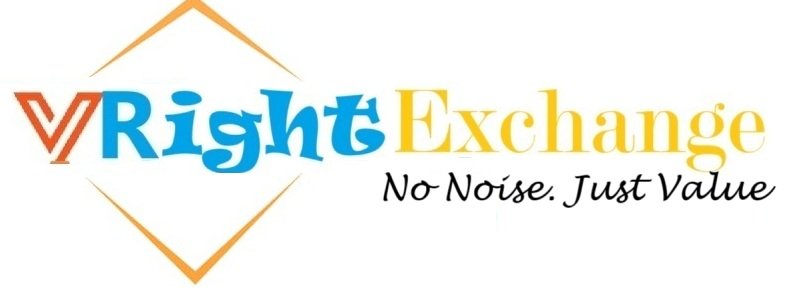-
Better Business Coach posted an update in the group VRIGHT Exchange | CEO Insights Circle
1 month, 2 weeks agoThe Hidden Price of Lies: How Misinformation is Costing Us Billions
By Sudarshan Srinivasan is Founder – WayMark
In our hyper-connected digital age, information travels at the speed of light—but so do lies. What was once confined to neighbourhood gossip or tabloid headlines has evolved into a global phenomenon that’s quietly bleeding our economy dry.
The staggering truth?
Although the World Economic Forum discusses the broader economic costs of false narratives and disinformation, informal estimates, false information is costing the world approximately $78 billion annually, creating ripple effects that touch every corner of our society.
Weapon of Mass economic destruction
Misinformation has become a weapon of mass economic destruction. In our algorithmic world, a lie can circle the globe before the truth has even put on its shoes, leaving devastation in its wake.
Imagine losing $136 billion in three minutes. That’s exactly what happened in 2013 when a single false tweet claimed there had been an explosion at the White House. In those brief moments, as panic spread faster than fact-checkers could respond, the S&P 500 plummeted, wiping out more wealth than many countries’ entire GDP.
Companies aren’t just passive victims in this information war—they’re spending billions to protect themselves. Crisis communication strategies, real-time monitoring systems, and reputation management campaigns have become essential business expenses.
Organizations are essentially paying a “misinformation tax,” diverting resources from innovation and growth to defend against digital deception.
The investment decisions that shape our economy are increasingly influenced by false narratives. When rumors masquerade as facts, they can trigger misguided policies and business strategies that create a domino effect of financial losses across industries.
Digital Platforms: Amplifiers of Chaos
Traditional media, have been struggling with declining public trust, faces the additional challenge of competing with information sources that prioritize speed and sensation over accuracy and verification.
Social media platforms have inadvertently become the perfect breeding ground for misinformation. Their algorithms, designed to maximize engagement, often prioritize sensational content over accurate reporting.
The result? False stories frequently spread six times faster than true ones, reaching more people and generating stronger emotional responses.
This digital amplification effect means that a rumor can become “truth” in the public consciousness before fact-checkers have even identified it as problematic.
The Pandemic as a Case Study
The COVID-19 pandemic offered a real-time demonstration of misinformation’s deadly potential. False claims about treatments, prevention methods, and vaccine safety didn’t just spread confusion—they killed people.
The economic cost of pandemic-related misinformation includes not only the direct healthcare expenses but also the prolonged economic restrictions needed to combat the virus when public health messages were undermined by false narratives.
The Human Cost Behind the Numbers
Beyond the balance sheets lies a more insidious impact: the erosion of trust itself. When consumers can’t distinguish between reliable information and elaborate fiction, they retreat. Spending decreases, investments stagnate, and the economic engine that depends on confident decision-making begins to sputter.
The psychological toll is equally devastating. Workers and leaders alike report increased stress levels as they navigate an information landscape filled with landmines. This mental fatigue translates into reduced productivity, higher turnover rates, and a workforce that’s constantly second-guessing the very information they need to do their jobs effectively.
A Global Challenge with Local Impact
The problem isn’t confined to major economies. In India, up to 50% of small and medium enterprises report experiencing digital harms from misinformation, with financial losses being the most common consequence.
This demonstrates how false information creates a cascading effect, hurting not just multinational corporations but also the small businesses that form the backbone of local economies.
The Road Ahead
Understanding the true cost of misinformation is the first step toward addressing it. The $78 billion annual price tag represents more than just numbers on a spreadsheet—it’s a measure of lost opportunities, delayed innovations, and diminished trust in the institutions that hold society together.
As we navigate an increasingly complex information landscape, the challenge isn’t just about identifying false information—it’s about building resilient systems that can function effectively even when perfect information isn’t available.
The cost of inaction is measured not just in dollars lost, but in the erosion of the social fabric that enables economic prosperity in the first place. The fight against misinformation isn’t just about protecting truth; it’s about protecting our collective future. In a world where information is power, ensuring that power isn’t wielded by those who would deceive us isn’t just a moral imperative—it’s an economic necessity.
_______________________________________________________
Author Sudarshan Srinivasan is Founder – WayMark Consulting & Coaching (www.waymarkllp.com)
Sudarshan S (www.ssudarshan.com)Reacted by Ayesha Aryan Rana And 1 Other -



